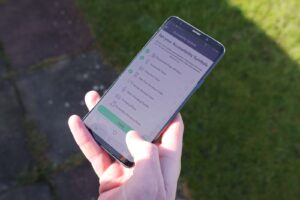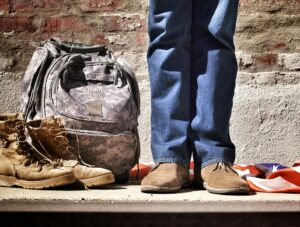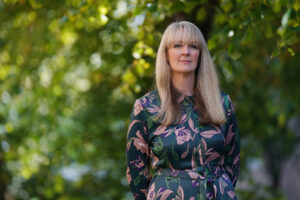Interview: The app aiming to make the world more accessible
Carrie-Ann Lightley, Head of Marketing at AccessAble, talks about how the app works and the collaboration they have been doing across various sectors, including the NHS.
As a wheelchair user herself, Carrie-Ann explains the importance of accessibility aids in empowering disabled people and their carers by setting realistic expectations and allowing to plan ahead when going out to new venues.
Your app is about providing information about venues to people with a range of access needs. How do you determine whether or not somewhere is accessible?
We’re not about making judgments when asked about saying whether accessibility is good or bad. I’m a wheelchair user myself, and what is accessible to me and what is perfect for my requirements could be very different to what is accessible for even the next wheelchair user. Never mind somebody with a completely different impairment or set of requirements. So we don’t have a minimum criteria for assessing a venue. We simply work with clients within healthcare and within the NHS and also within education within local authorities and private sector businesses.
We look at the whole user journey, starting from the car park. Are there accessible parking spaces, what are the gradients like, what’s the terrain like? What are the distances like between places? Then that checking process is repeated for entrances, receptions, corridors, toilets, clinics, treatment rooms, waiting rooms etc. Our guides try to cover every touch point that a patient, a visitor or a staff member would come across in public areas of the facility.
And who carries out these checks?
We have a team of around 50 full-time trained surveyors. They’re all employed by AccessAble and we provide them with full training. We have a mixture of both disabled and non-disabled surveyors. That’s quite important because we do need to be able to retain the flexibility to assess venues that may not be fully accessible for wheelchair users, for example.
I wouldn’t make a great surveyor because I could only go into venues that had level access, but that might mean that I was excluding venues that may have fantastic provision for people with a hearing impairment. There just isn’t any one size fits all. So we have a mixture of surveyors. They’re based across the country. They’re all trained by us. They’re all employed by us. And the template that they use for checking has been created and informed by our constant consultation with the disabled community. So the information that we collect has been guided by the people who use it.
Your company was founded in 2000 and was originally called DisabledGo. Can you tell me a bit more about the rebrand and what kind of hurdles you’ve faced over the past 22 years?
Dr Gregory Burke initially set up what was then called Disabled Go as a result of his own experiences. As a teenager, he had quite serious illness, spent a long time in hospital, came out of hospital and became a wheelchair user. And he found that his world became much smaller and much more uncertain. He was only really able to go to places where he knew and had been before. He wasn’t able to find information about places where he wanted to go.
And even though the Internet was thriving, there was so much information available, but no information about accessibility. And Gregory always thought this information should be as easily available as the venue opening times or the address. What’s the point of knowing if you’re open if I don’t know if I can even get through the door, frankly?
So he knew a lot about his own requirements, but the first major challenge was figuring out how to capture information that’s going to suit as many people with as many different impairments as possible. And that was where our ethos of constant consultation with the community began. He spent two years travelling up and down the country and meeting with different disabled people’s organisations.
And when I first joined my main role was to manage and implement the rebrand to AccessAble. We found that our initial name was narrowing both our audience and our client base. Because we know that our information is useful for all kinds people and not all of them identify with the word disabled. For example, an older person using a walking stick might not class themselves as disabled but could still benefit from the information we provide.

How has the Covid-19 pandemic affected your user-base?
We had over 3 million unique users last year. This figure just goes to show how many people need this information.
The Covid-19 pandemic obviously presented a challenge to us as a business whose model is to help disabled people go out. Nobody was going out, but least of all disabled people who were often the ones shielding. That did present a challenge. We had to update a lot of information about our venues quite quickly, because we added a Covid-19 section in each relevant Access Guide.
But in the end, the pandemic has broadened our user base. More people are researching venues before going out and manage their own expectations. And the other side of this is that Covid-19 has, sadly, created more disabled people. We have millions of people living with long Covid-19, who previously were non-disabled, having to navigate considerably more challenging lives.
What kind of work have you been doing with the NHS?
We now work with over 80 NHS Trusts across the UK. We know from feedback that our Access Guides help to reduce things like missed appointments, help to support patients to know what they can expect when they get to the hospital or the clinic and reduce hospital-related anxiety. I use the guides myself when I have to go to major hospitals.
How could this app be integrated from a carers perspective?
As someone with access needs, it is nice to know that the responsibility doesn’t just sit with me and it isn’t just a me problem. Many disabled people internalise the problem of accessibility. But what we know from the social model of disability is that having cerebral palsy does not make me disabled – I am disabled because of inaccessible environments.
Not everywhere can be accessible to me, and I can’t expect everywhere to be accessible to me. But if my expectations can be managed in advance, it takes away so much anxiety and anticipatory fear.
Having this information is really empowering for both the disabled person and the carer. There is often a burden of checking accessibility information and it often sits with the disabled person. The fact that this information is freely available online through an app enables the carer to provide a deeper level of support.
Photo credit AccessAble















